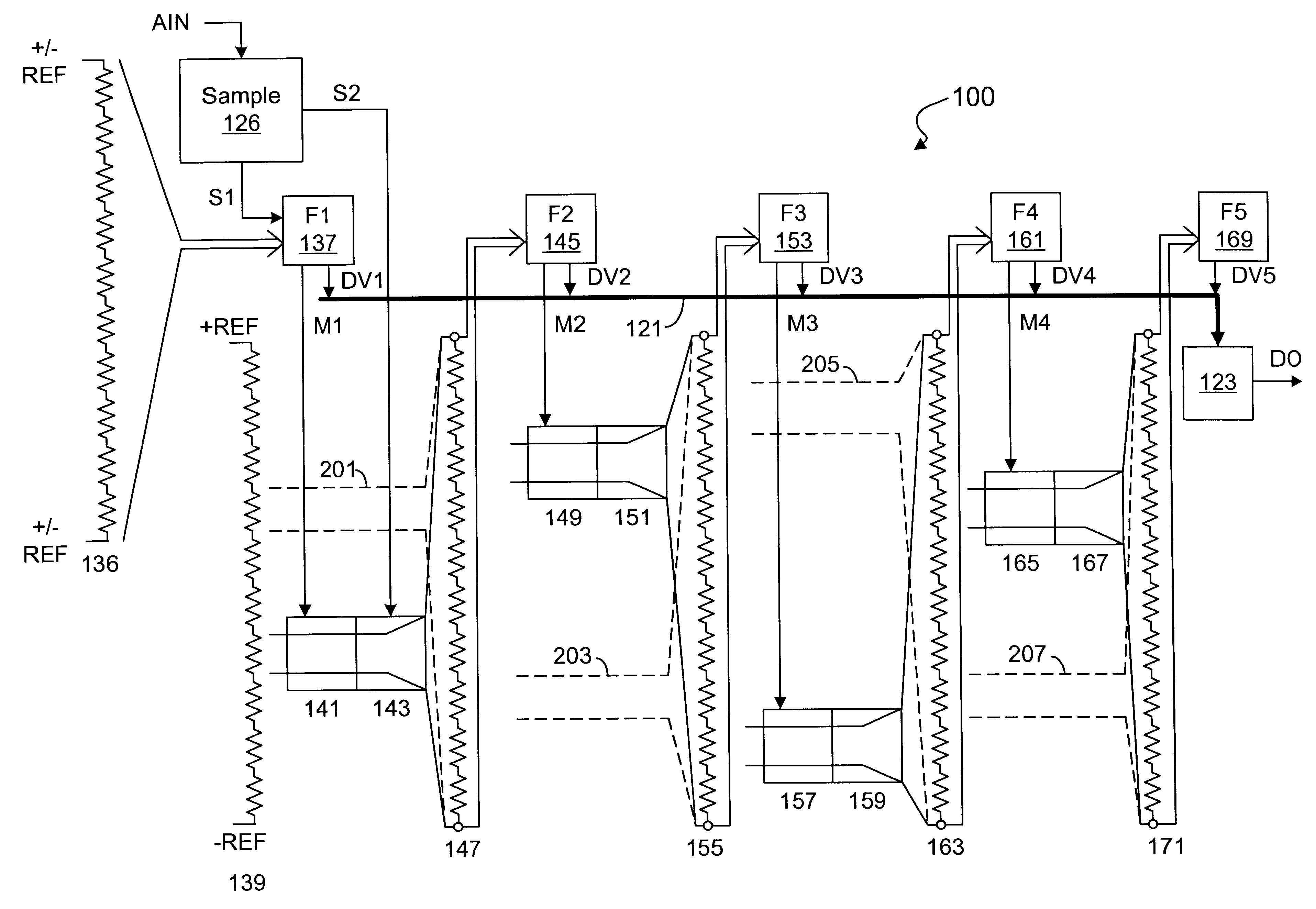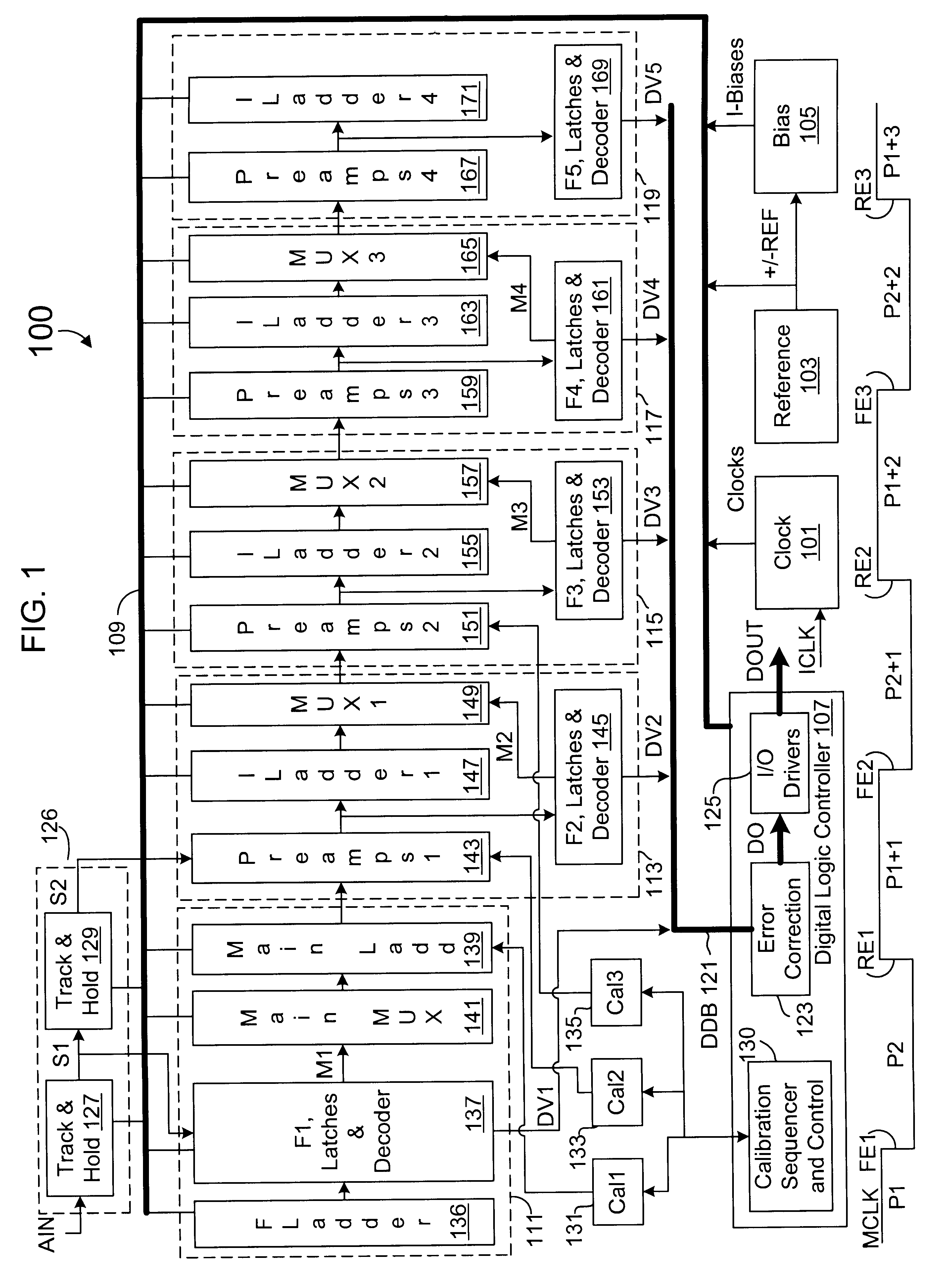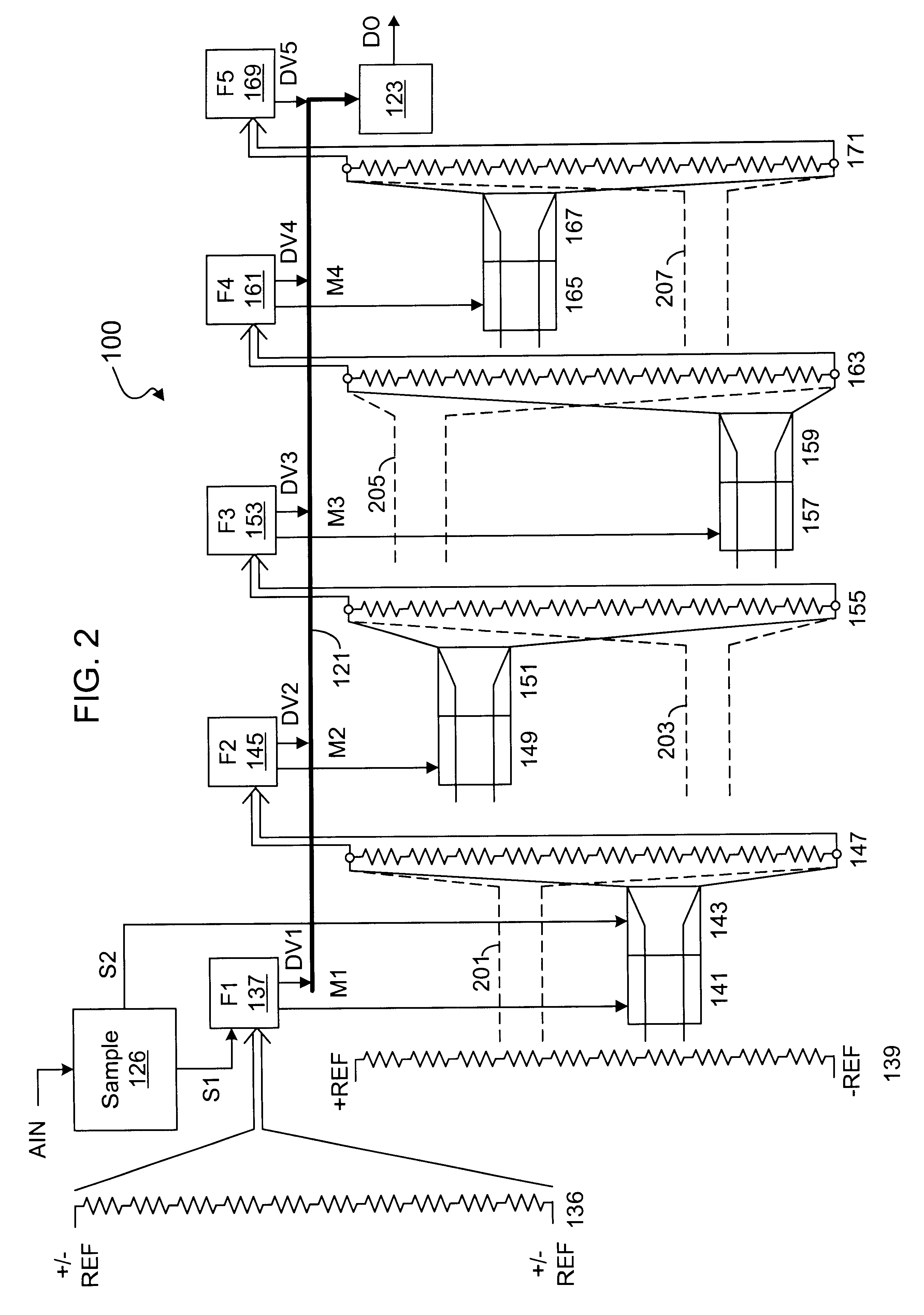Analog to digital converter using subranging and interpolation
- Summary
- Abstract
- Description
- Claims
- Application Information
AI Technical Summary
Benefits of technology
Problems solved by technology
Method used
Image
Examples
Embodiment Construction
FIG. 1 is a block diagram of an exemplary 14-bit analog to digital converter (ADC) 100 in accordance with an embodiment of the present invention. The ADC 100 includes support circuitry, such as a clock circuit 101, a reference circuit 103, a bias circuit 105 and a digital logic controller 107, all coupled together via a bias / clock bus 109. The clock circuit 101 receives an input clock signal ICLK and generates a plurality of clock signals "Clocks" for providing synchronization of the various components of the ADC 100. The reference circuit 103 generates reference voltage signals +REF and -REF that are sufficiently independent of temperature and power supply variations. The + / -REF signals are provided to the bias circuit 105, which develops a plurality of temperature-independent bias current signals "I-Biases" that provide current biasing for various components of the ADC 100 including preamplifiers within pipelined stages, as further described below.
The signals of the bias / clock bus...
PUM
 Login to View More
Login to View More Abstract
Description
Claims
Application Information
 Login to View More
Login to View More - R&D
- Intellectual Property
- Life Sciences
- Materials
- Tech Scout
- Unparalleled Data Quality
- Higher Quality Content
- 60% Fewer Hallucinations
Browse by: Latest US Patents, China's latest patents, Technical Efficacy Thesaurus, Application Domain, Technology Topic, Popular Technical Reports.
© 2025 PatSnap. All rights reserved.Legal|Privacy policy|Modern Slavery Act Transparency Statement|Sitemap|About US| Contact US: help@patsnap.com



